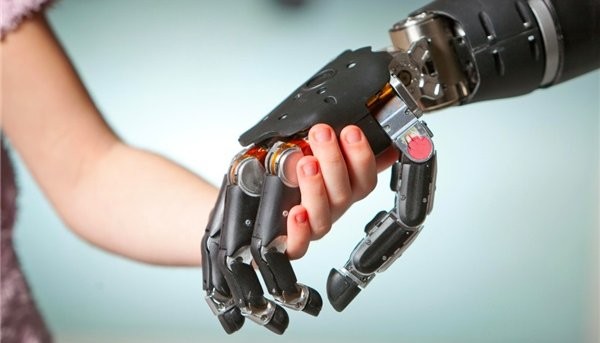Tech
How Printing Technology Is Revolutionizing the Healthcare Industry

The development of new treatments, diagnostics, and therapies at an unprecedented rate has been made possible by printing technology, which has had a significant influence on the healthcare sector. This technology enables 3D printing, breakthroughs in imaging technology, and quick prototyping of medical equipment, allowing for accurate representations of organs and tissues. Additionally, printing technology allows for higher quality requirements to be maintained while producing pharmaceuticals more quickly and with smaller materials. With the advent of personalized medicine, patients can now get medication in doses that are specifically suited to their requirements. OBL Prints Dubai a leading Printing Company based in Dubai sheds light on how the healthcare sector is evolving, from personalized medical gadgets to printing human organs and tissues.
3D Printing in the Healthcare Industry
With the advent of 3D printing technology, the healthcare sector saw a transformation that allowed for increased precision and accuracy in medical treatments. Using this technology, medical professionals may design unique implants and prostheses that are tailored to the size and form of a patient’s body. In addition, 3D printing gives surgeons a three-dimensional view of the organs, which helps with successful operations. Because it uses less material than traditional manufacturing techniques while producing high-quality outputs, this technology also offers economic effectiveness.
For previously incurable disorders like cancer and diabetes, regenerative medicines and stem cells provide personalized therapy and treatments. Personalized medication delivery systems that target certain cells in a patient’s body are made possible by 3D printing technology, enabling researchers to examine illnesses at the cellular level without using living things or tissues. In the near future, these developments could result in more precise diagnoses and better-tailored therapies.
Advances in Medical Imaging
Medical imaging technology is a crucial tool in the healthcare sector for accurate illness diagnosis and treatment. Medical imaging uses imaging techniques including X-rays, CT scans, MRIs, and ultrasounds to provide comprehensive pictures of the inside organs and tissues of patients. This allows for rapid and precise diagnosis without the need for intrusive treatments.
Medical imaging is crucial for both therapeutic procedures like radiation therapy and surgery as well as diagnostic purposes. X-ray imaging and MRI scans both assist doctors accurately target tumors during radiation therapy, minimizing the risk of adverse effects and minimizing harm to healthy tissue.
Medical imaging technology advancements have dramatically improved diagnosis and treatment choices, enabling patients to receive high-quality healthcare wherever in the globe.
Robotic Surgery
Robotic surgery, which uses computer-controlled robots for intricate treatments including laparoscopic cholecystectomy, heart valve replacement, and urological surgery, offers more accuracy and precision than conventional open surgeries. Compared to conventional techniques, this shortens postoperative discomfort and healing time.
Robotic surgery promises more precision, better visualization, quicker procedures, a decreased risk of infection, and less blood loss because of smaller incisions. Surgeons may do delicate procedures in constrained settings using cutting-edge 3D imaging technology, which also provides comprehensive images of the patient’s body.
By enabling competent surgeons to carry out difficult surgeries with greater success rates and fewer problems, robotic surgery revolutionizes healthcare. Due to its low cost and continued integration into systems throughout the world, this technology will be advantageous to both patients and professionals.
Personalized Medicine
Utilizing biological data from patients, personalized medicine creates medicines that are specifically suited to each patient, thereby improving results and lowering costs. Unique genetic mutations are identified by cutting-edge technologies like genomic sequencing, big data analytics, and machine learning, enabling more precise diagnoses and treatment strategies. In the end, this strategy lowers total medical expenses while improving patient care.
By focusing on certain genes associated with particular illnesses, personalized medicine provides a significant advantage by minimizing negative medication effects. This method aids medical professionals in identifying individuals who have particular gene mutations, avoiding costly therapies that might not work. Personalized medicine takes into account a variety of variables to better understand the underlying causes of conditions like diabetes or high blood pressure, enabling long-term illness management as opposed to only temporary discomfort alleviation.
By studying a person’s full genome, personalized medicine has the potential to contribute to the development of preventive. This enables doctors to identify hazards before they become serious, potentially preventing the development of chronic disorders. Researchers now have more opportunities to learn how our behaviors affect the emergence of particular diseases, giving us more control over our health, thanks to the study of a person’s DNA profile.
All these benefits make personalized medicine an invaluable tool in revolutionizing modern healthcare and improving patient care worldwide
Conclusion
By enabling personalized medical devices and giving researchers resources to investigate illnesses at the cellular level, 3D printing technology has had a huge influence on the healthcare sector. The accuracy of illness diagnosis has increased because to developments in medical imaging technology like X-rays and MRIs, and difficult surgeries are being performed more successfully thanks to robotic surgery. By taking into account unique biological data in treatment plans, personalised medicine also makes it possible for improved preventative strategies, resulting in the best possible health outcomes for all patients throughout the world. Because of this, 3D printing technology will remain essential to contemporary healthcare for years to come.
-
Blog1 year ago
MyCSULB: Login to CSULB Student and Employee Portal – MyCSULB 2023
-
Android App3 years ago
Cqatest App What is It
-
Android1 year ago
What Is content://com.android.browser.home/ All About in 2023? Set Up content com android browser home
-
Software2 years ago
A Guide For Better Cybersecurity & Data Protection For Your Devices
-
Latest News2 years ago
Soap2day Similar Sites And Alternatives To Watch Free Movies
-
Android2 years ago
What is OMACP And How To Remove It? Easy Guide OMACP 2022
-
Android3 years ago
What is org.codeaurora.snapcam?
-
Business2 years ago
Know Your Business (KYB) Process – Critical Component For Partnerships





















